Tasting Barolo in the Piemonte – the Langhe
Posted on February 17,2018 By John Compisi

Tasting Barolo in the Piemonte – the Langhe
The Langhe is a hilly area in the Piedmont region of northern Italy. It is famous for its wines, cheeses, and truffles—particularly the white truffles of Alba. The countryside remains largely agrarian and is highly regarded for its vineyards which produce, predominantly, Nebbiolo grapes to make the wines of the region, most notably Barolo and Barbaresco although Dolcetto d’Alba, Barbera d’Alba and Arneis are also highly regarded as well.
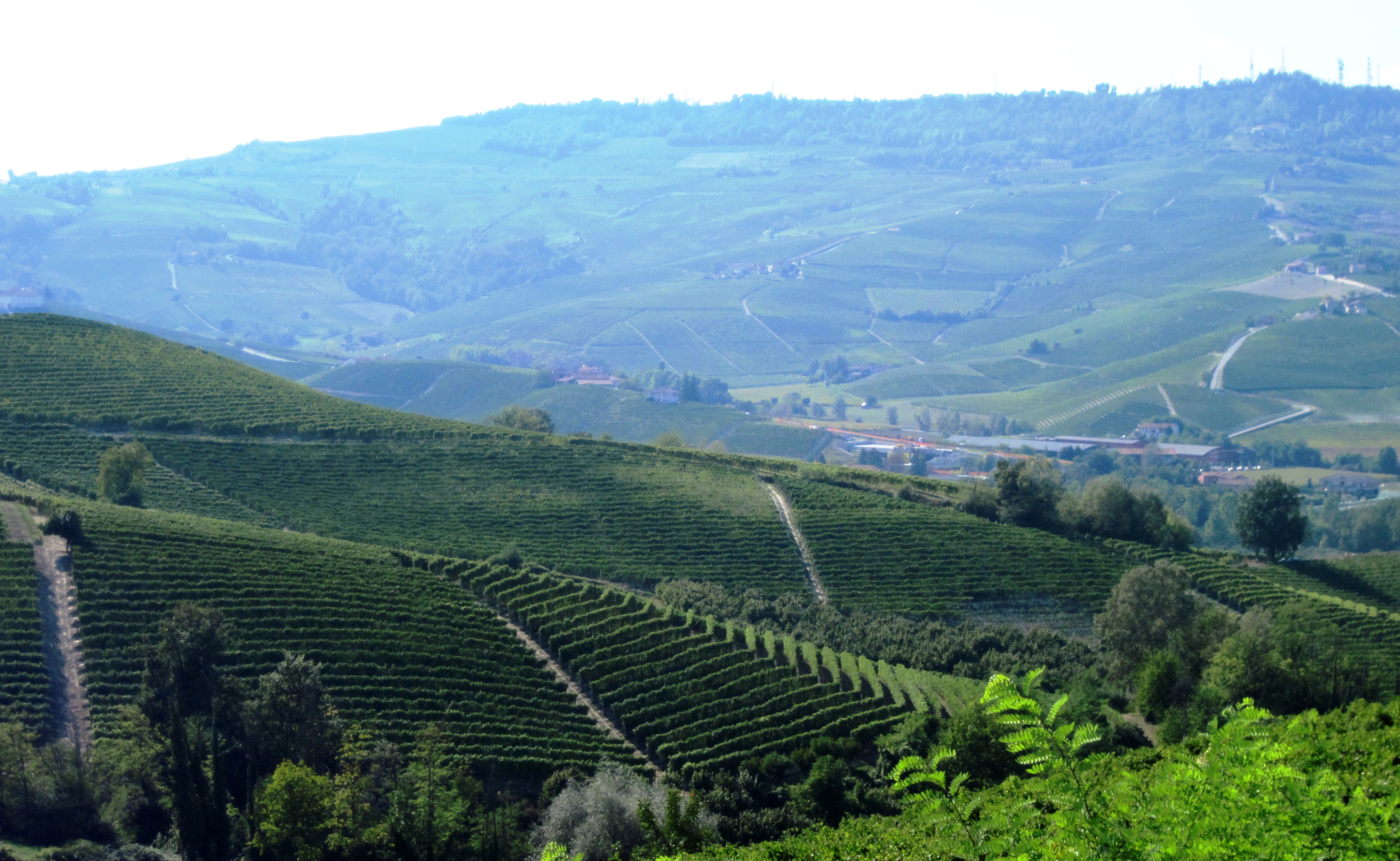 The Langhe terroir and terrain is absolutely gorgeous (L.Compisi)
The Langhe terroir and terrain is absolutely gorgeous (L.Compisi)
We flew from San Francisco to Milan, via Washington, D.C. (we avoid Chicago and LaGuardia at all costs) to arrive. Although Turin is closer to the region (68 km versus 160 km from Milan), our travels included Lago di Como, the Veneto, Emilia-Romagna and Liguria so Milan was a better choice for us.
For our visit we stayed in the hilltop town of La Morra for 5 days in early September. The municipality of La Morra, a small village in the heart of the Langhe, is surrounded by rolling hills of vineyards and is close by the world-famous towns of Barolo and Barbaresco. The vineyards are recognized for providing an outstanding example of man’s interaction with his natural environment and provide an international benchmark for adapting grape varieties to specific soils and climatic conditions.
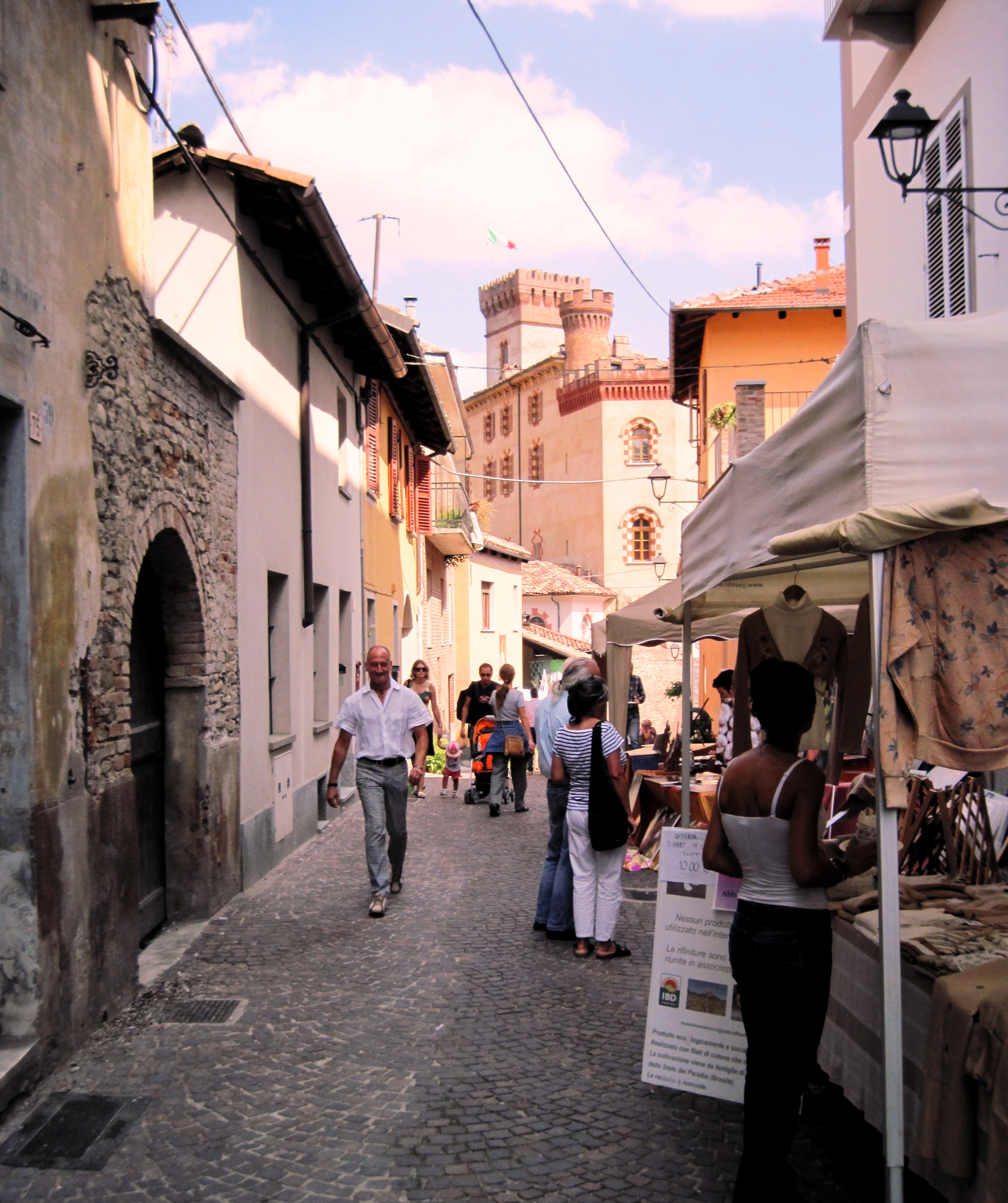 The streets of Barolo during Festa (L.Compisi)
The streets of Barolo during Festa (L.Compisi)
We stayed at the Corte Gondina Hotel. Corte Gondina is elegant and comfortable and is situated in the center of La Morra. It is a delightful private habitat where the proprietors, Elena and Bruno Viberti, have skillfully combined past and present to create a unique experience. Elena and Bruno offer concierge services. They made our reservations for tours and tastings at several wineries and dinner at the local restaurants.
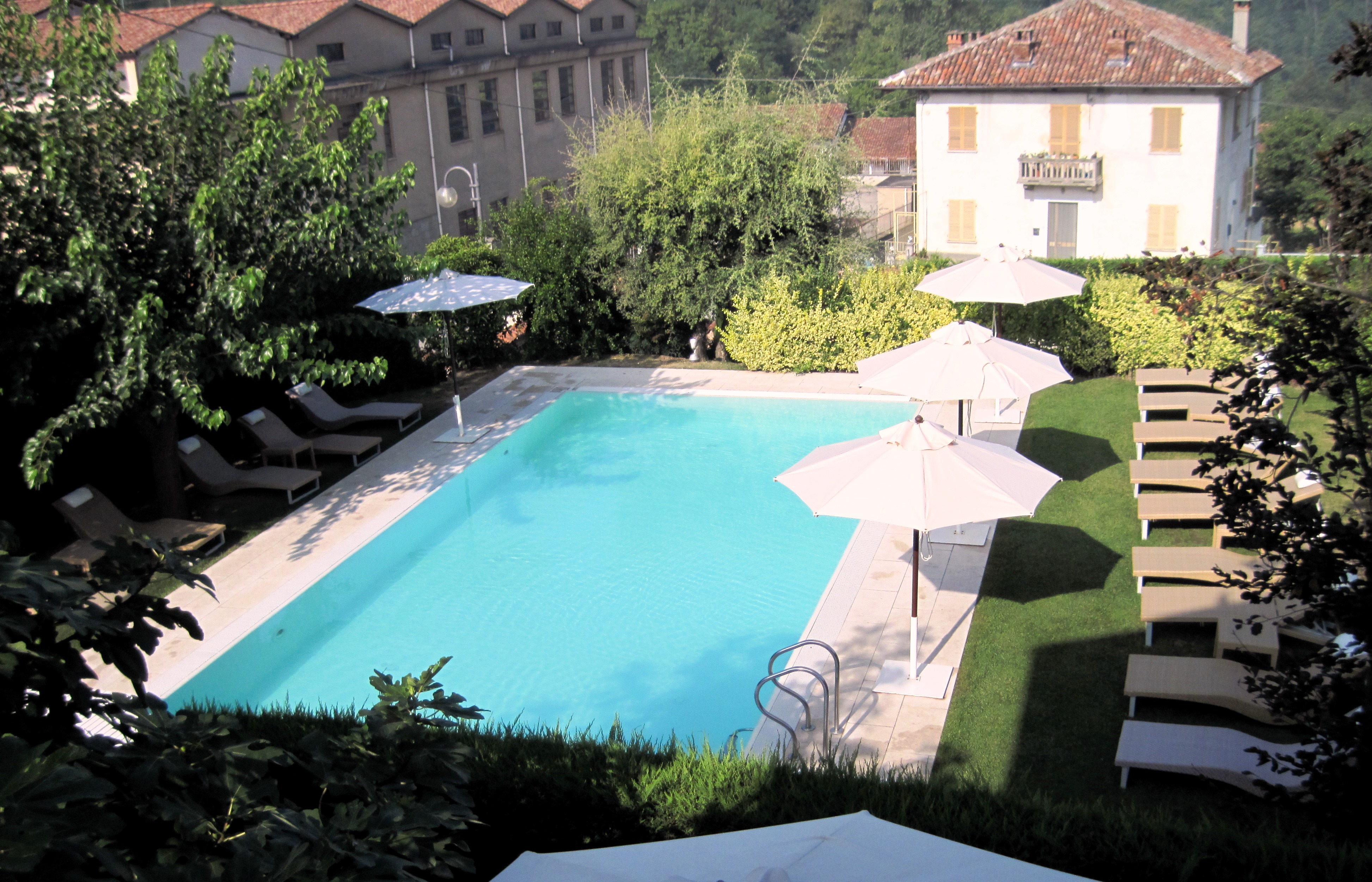 The pool from our room at Corte Gondina Hotel (L.Compisi)
The pool from our room at Corte Gondina Hotel (L.Compisi)
We, quite unexpectedly, were in the region during the annual Barolo Festival which was nearby. Barolo is only about 6 kilometers from La Morra. The Barolo experience was magical and intimate, unlike anything we had attended in California, although it was very similar to wine festivals we had attended in Tuscany and Umbria. The town is quite small and, of course has a castle at its center. The streets are brick and narrow. No sidewalks so pedestrian compete with the small Italian cars for space, quite congenially. There is no ‘competition’ between producers, rather it is an opportunity for the region to present their wines. Local crafts, produce and cheeses competed for our attention.
Local Produce (l) and formal pouring of Barolo at the Festa (L.Compisi)
The Barolo Museum (Enoteca Regionale del Barolo) was unique and offered wines for sale as well as other books and materials for the serious student of this wine growing region. It reminded me of our experience at a similar festival for Sagrantino in Umbria in the town of Montefalco. The Barolo Regional Enoteca, located in Castello Falletti, was founded in 1982. It’s organized and sponsored by the 11 communes that produce Barolo, by the province administration, the Cuneo Chamber of Commerce, the Barolo Consorzio, and by the Piedmont regional government. A non-profit entity, its mission is to promote and preserve the image of Barolo wine and its production area. Producer members, at present 195, must produce Barolo. The public area comprises three sections: the displays show wines (not all for sale) from the overall Barolo area, a tasting area, a retail sales area with bottles at producer-established prices. Quite fascinating.
The Enoteca Regionale del Barolo (l) and wines for tasting at the Festa (L.Compisi)
 Castiglione Falletto from a distance (L.Compisi)
Castiglione Falletto from a distance (L.Compisi)
We were fortunate to visit 3 wineries in the region. Each was unique, family run and truly Italian. We visited the family wineries of Marcarini, Vietti and Cavallotto.
The Marcarini family, now six generations strong, manages their own vineyards and produce wine according to the most rigorous Piedmont and, in particular, Langhe traditions. It is located right in La Morra and very accessible. The cellars are very impressive and the wines were truly typical of the region.
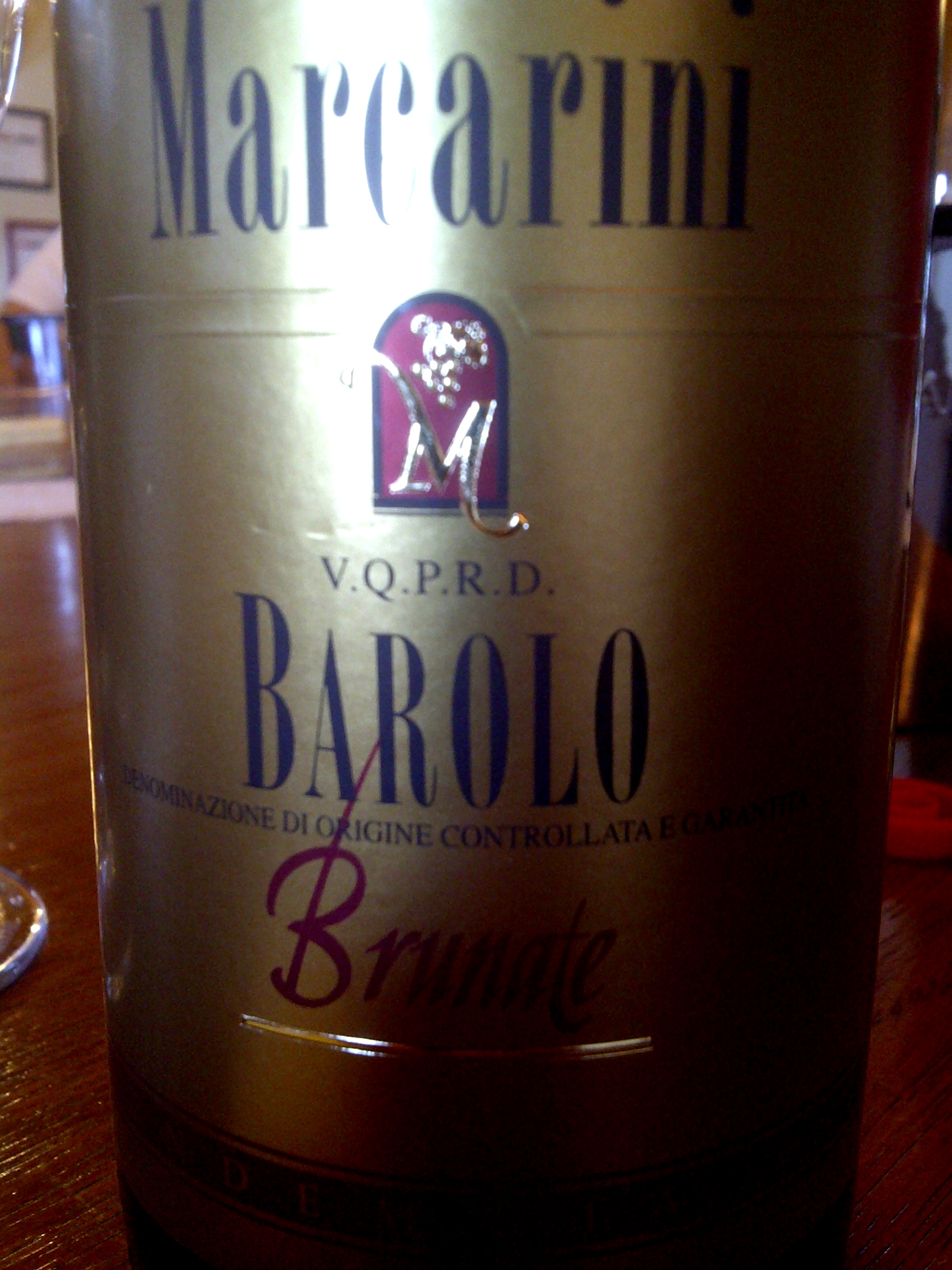 Marcarini Barolo (L.Compisi)
Marcarini Barolo (L.Compisi)
The historic Barolo winery Vietti continues to be managed and guided by enologist and CEO Luca Currado, a member of the Vietti family line. Founded in 1873 in the commune of Castiglione Falletto, Vietti is currently owned by the Krause family of Iowa. The winery and vineyards represent 84 acres of prime real estate. We were very impressed by the tour and tasting we experienced with Elena Penna Currado.
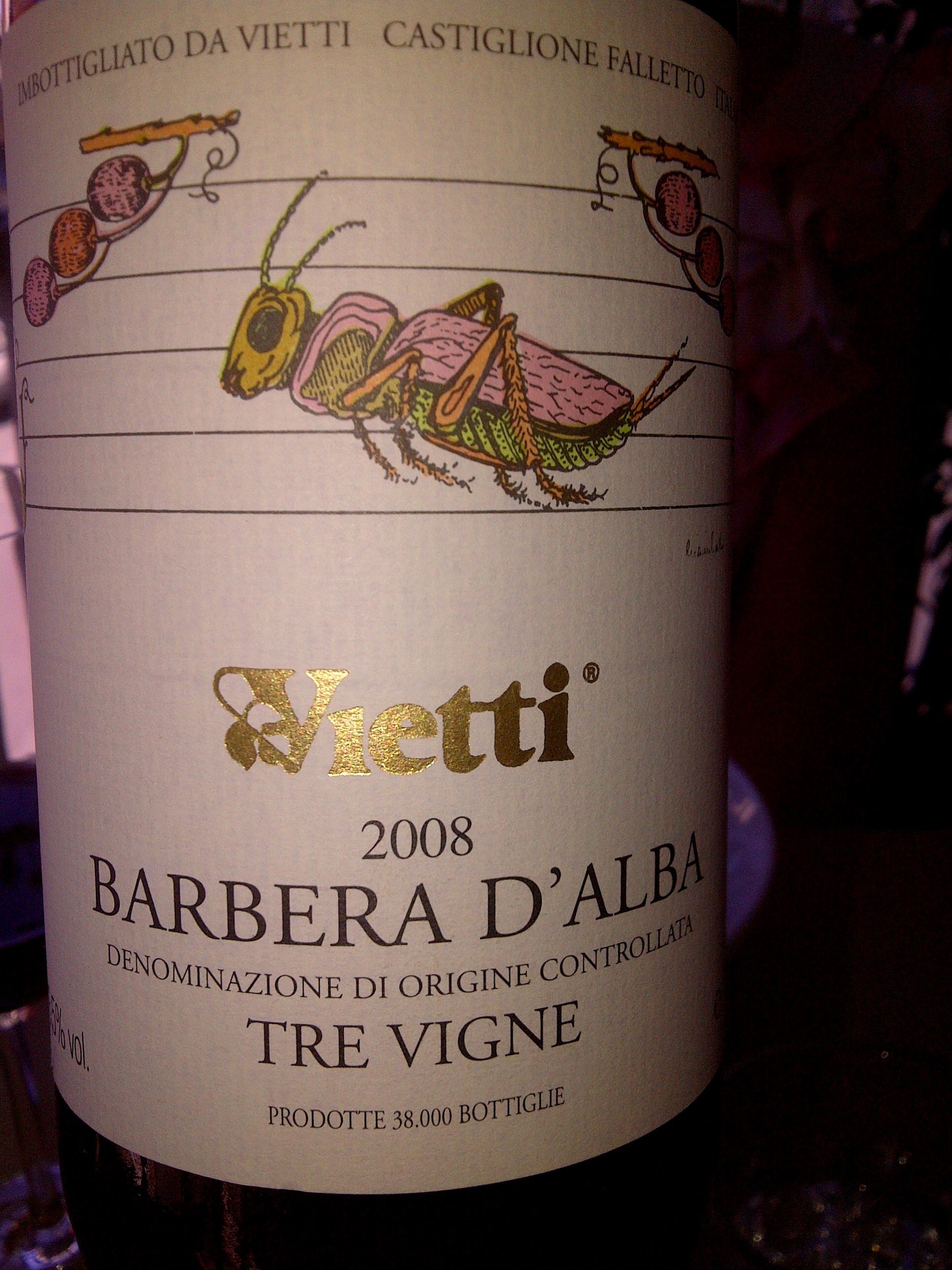 Fortunate to taste library wines at Vietti (L.Compisi)
Fortunate to taste library wines at Vietti (L.Compisi)
The Cavallotto family has owned the estate Tenuta Bricco Boschis since 1928. They were the first cultivators in Castiglione Falletto, in 1946, to vinify all of their estate’s fruit. In 1948 they released the first bottling of their own Barolo wine, with the label and registered trademark of Cavallotto. Today the children of Olivio – Laura, Giuseppe and Alfio, the 4th generation working the family farm – continue to exclusively vinify the grapes: Barolo, Dolcetto d’Alba, Barbera d’Alba, Langhe Nebbiolo, Langhe Freisa, Langhe “Grign” made from Grignolino grapes, Langhe Chardonnay and “Pinner” made from Pinot Nero grapes. We had a delightful vineyard tour and tasting in their tasting room. Ah…Barolo!
Cavallotto Nebbiolo grapes and their barrel room! (L.Compisi)
The Langhe were inscribed on UNESCO World Heritage site list in 2014.